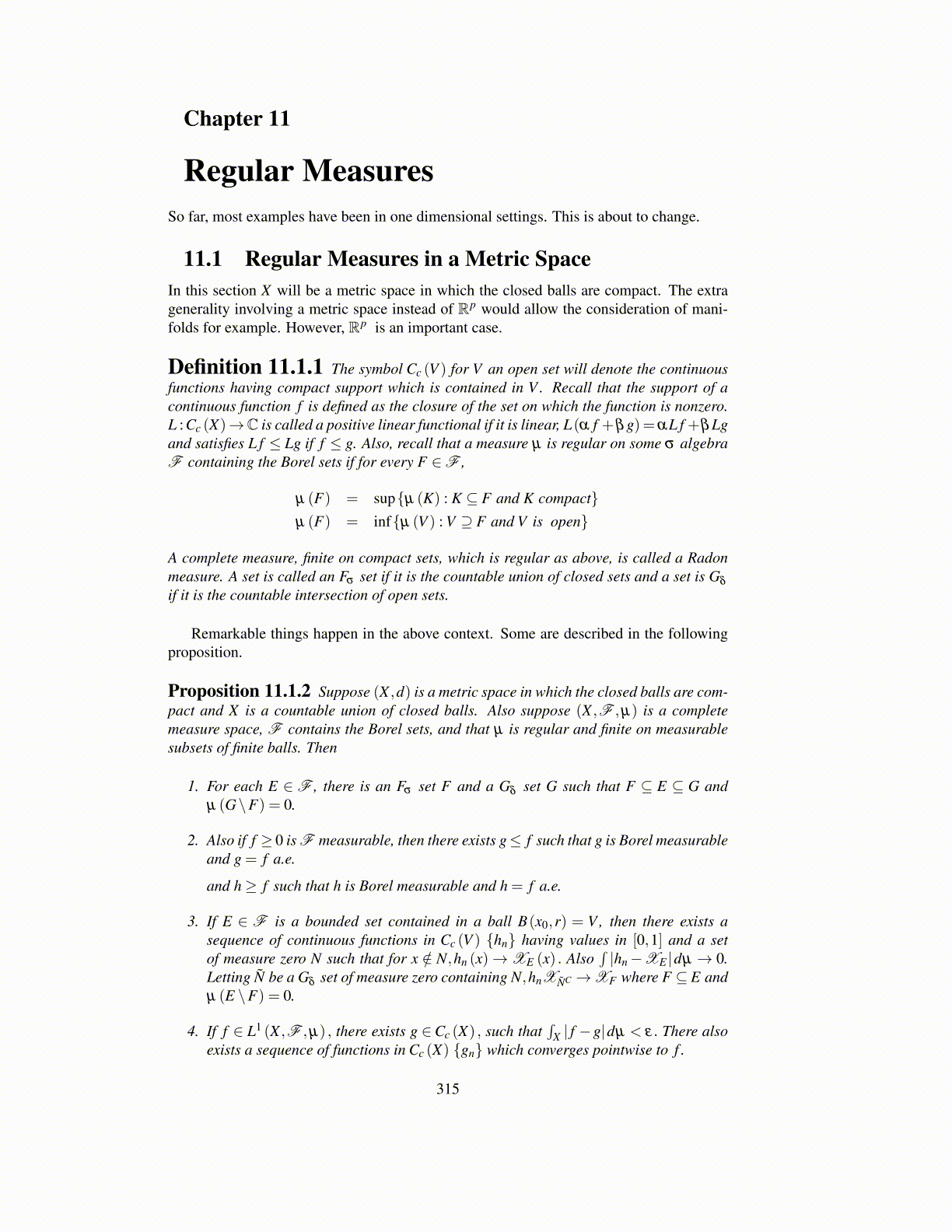
Chapter 11
Regular MeasuresSo far, most examples have been in one dimensional settings. This is about to change.
11.1 Regular Measures in a Metric SpaceIn this section X will be a metric space in which the closed balls are compact. The extragenerality involving a metric space instead of Rp would allow the consideration of mani-folds for example. However, Rp is an important case.
Definition 11.1.1 The symbol Cc (V ) for V an open set will denote the continuousfunctions having compact support which is contained in V . Recall that the support of acontinuous function f is defined as the closure of the set on which the function is nonzero.L : Cc (X)→C is called a positive linear functional if it is linear, L(α f +βg)=αL f +βLgand satisfies L f ≤ Lg if f ≤ g. Also, recall that a measure µ is regular on some σ algebraF containing the Borel sets if for every F ∈F ,
µ (F) = sup{µ (K) : K ⊆ F and K compact}µ (F) = inf{µ (V ) : V ⊇ F and V is open}
A complete measure, finite on compact sets, which is regular as above, is called a Radonmeasure. A set is called an Fσ set if it is the countable union of closed sets and a set is Gδ
if it is the countable intersection of open sets.
Remarkable things happen in the above context. Some are described in the followingproposition.
Proposition 11.1.2 Suppose (X ,d) is a metric space in which the closed balls are com-pact and X is a countable union of closed balls. Also suppose (X ,F ,µ) is a completemeasure space, F contains the Borel sets, and that µ is regular and finite on measurablesubsets of finite balls. Then
1. For each E ∈ F , there is an Fσ set F and a Gδ set G such that F ⊆ E ⊆ G andµ (G\F) = 0.
2. Also if f ≥ 0 is F measurable, then there exists g≤ f such that g is Borel measurableand g = f a.e.
and h≥ f such that h is Borel measurable and h = f a.e.
3. If E ∈ F is a bounded set contained in a ball B(x0,r) = V , then there exists asequence of continuous functions in Cc (V ) {hn} having values in [0,1] and a setof measure zero N such that for x /∈ N,hn (x)→XE (x) . Also
∫|hn−XE |dµ → 0.
Letting Ñ be a Gδ set of measure zero containing N,hnXÑC →XF where F ⊆ E andµ (E \F) = 0.
4. If f ∈ L1 (X ,F ,µ) , there exists g ∈Cc (X) , such that∫
X | f −g|dµ < ε. There alsoexists a sequence of functions in Cc (X) {gn} which converges pointwise to f .
315